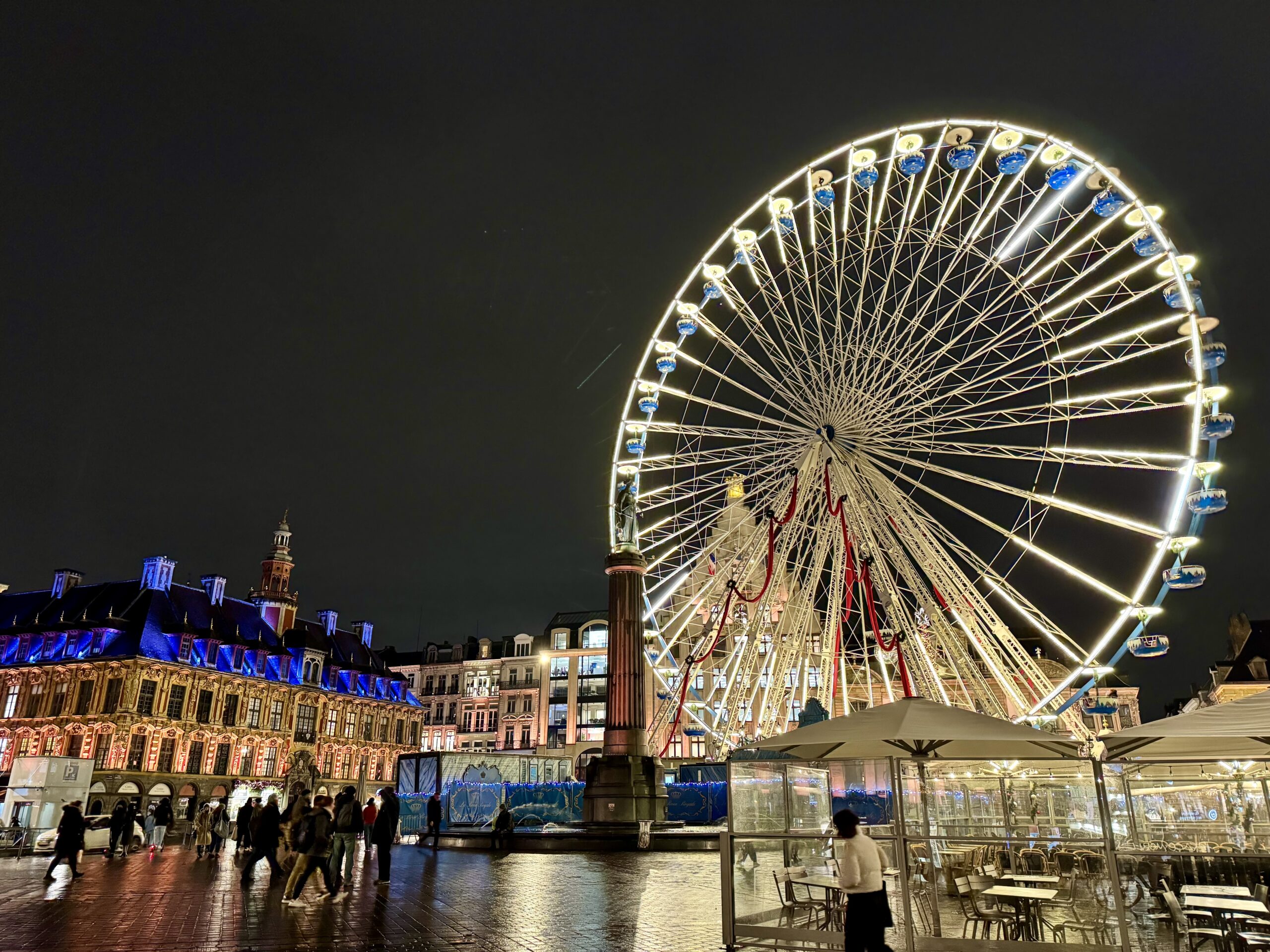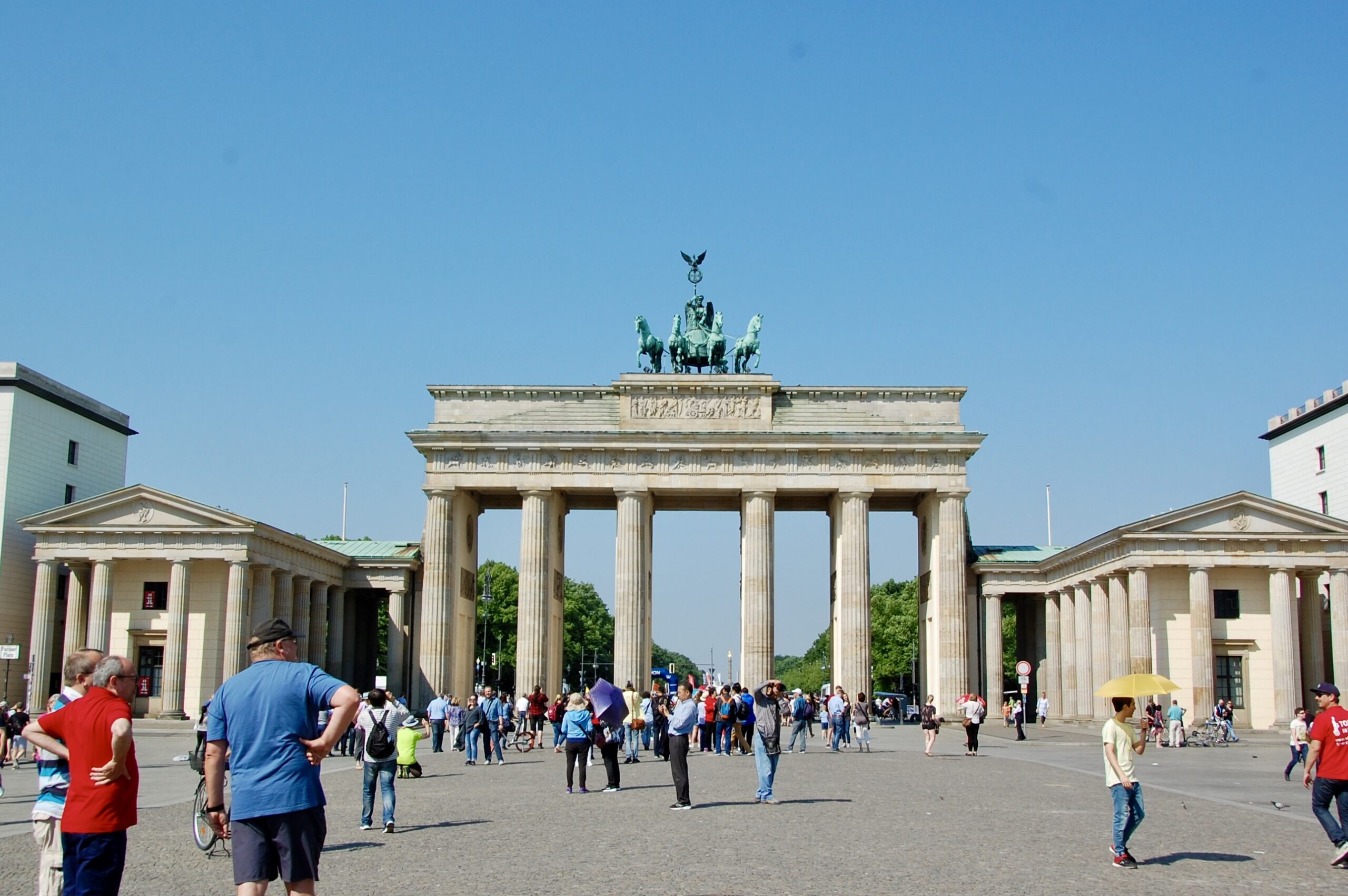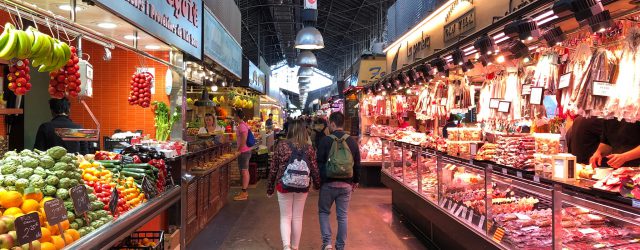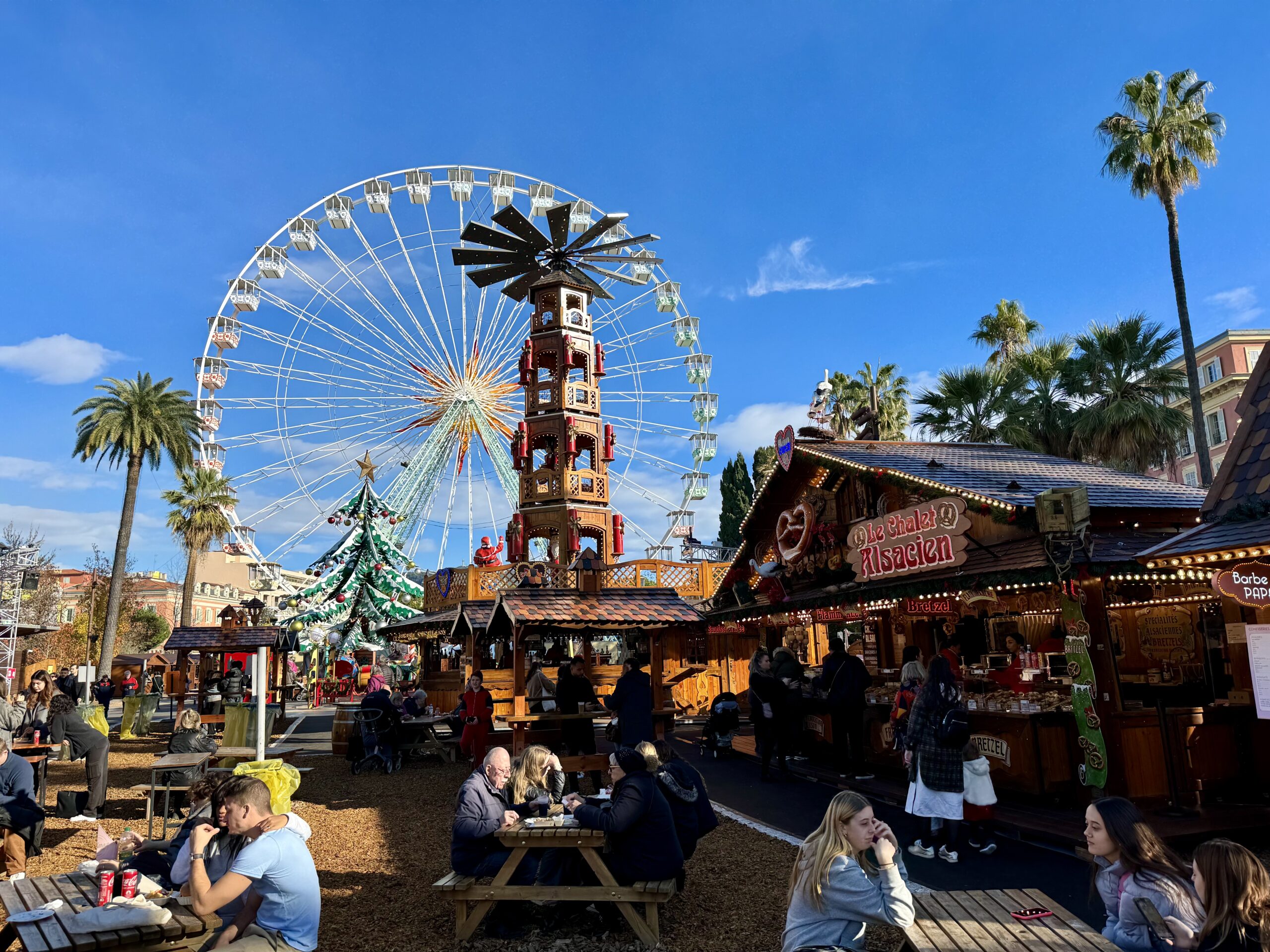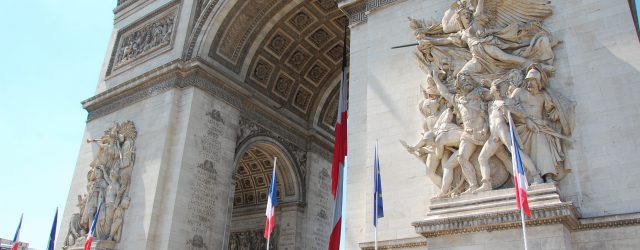Since returning to Chicago this past May, Nik and I have missed traveling and visiting new cities in Europe. For that reason, we decided to book a two week trip in December to visit Christmas markets and to see how one of our favorite cities, Nice, France, is during the winter. This trip would take us to Lille, France, then into Belgium for stays in Antwerp and Ghent and then to Nice for a few nights and one night in Paris before flying back to Chicago. Read on to see how Nik and I spent a few days in Lille.
Quick Stop in Paris
We flew to Paris Orly airport via La Compagnie, an all business-class seating airline. You can read our recap here.
Getting from Paris to Lille is pretty easy by train but we had a few hours to kill before our departure. For a snack we went to Terminus Nord, across from the Gare du Nord train station, stored our bags for two hours and then took the Metro to Galeries Lafayette to see their famed Christmas windows and Christmas tree.
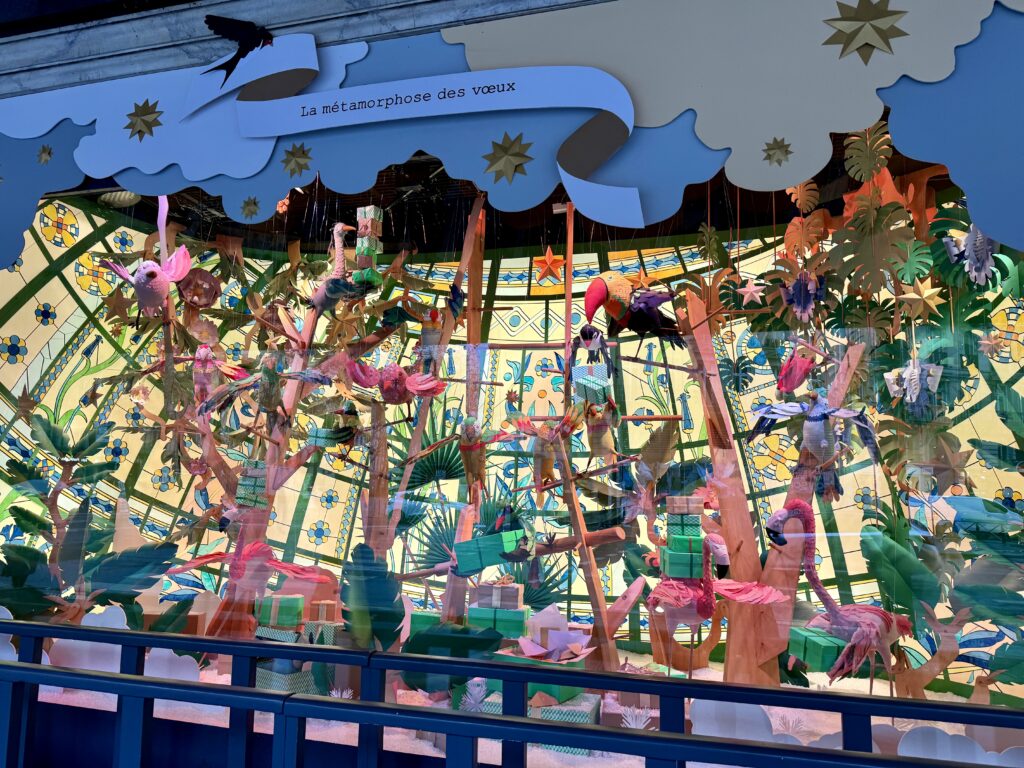
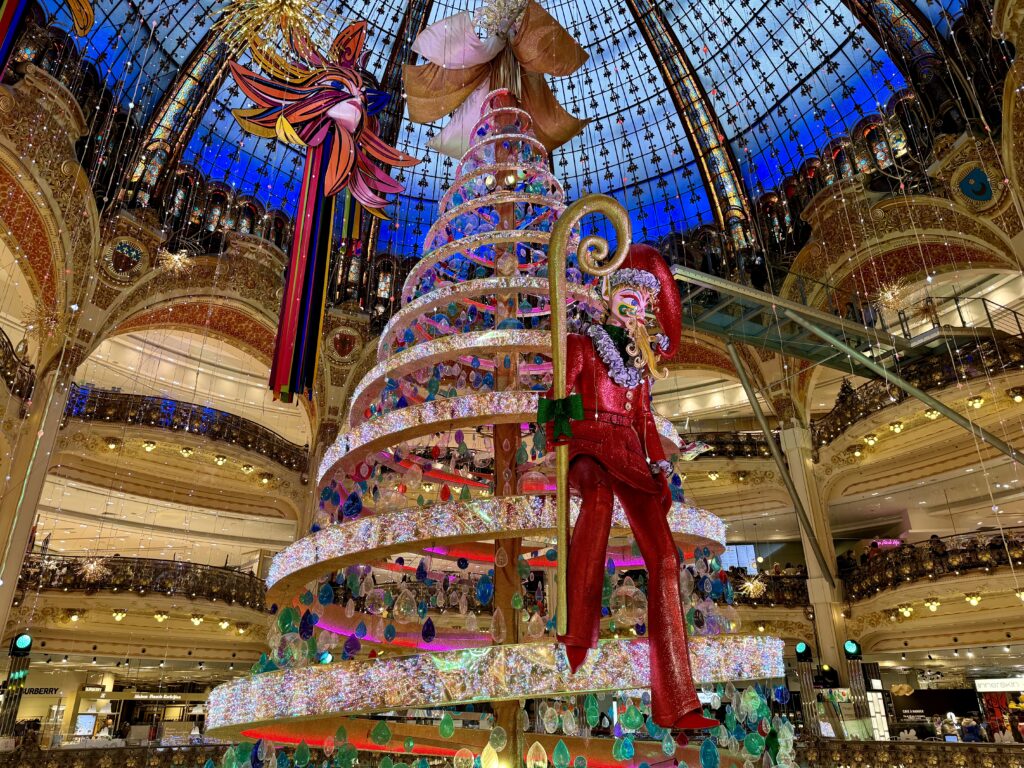
Train to Lille
Once it was departure time at Gare du Nord, we boarded our train and had seats that faced each other. Reaching almost 200 mph, our train was much faster than any in the United States. It’s well known that European train systems are much more efficient between cities and countries.

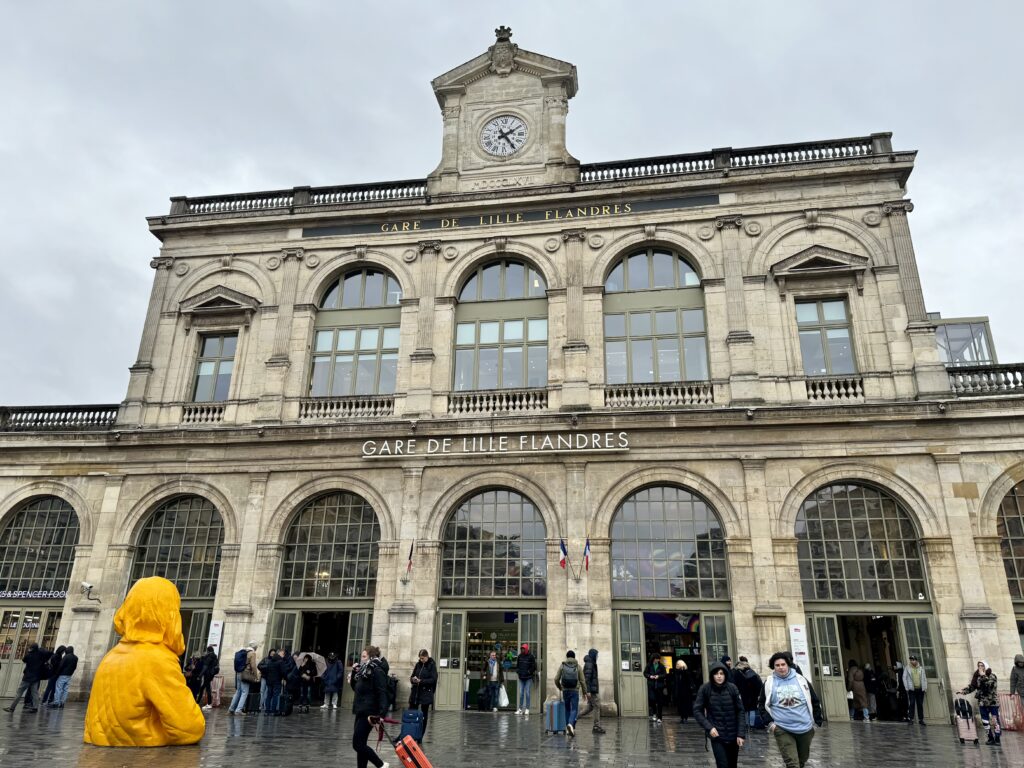
After about 90 minutes we arrived to kick off our few days in Lille. We pulled into Lille Flandres and made the short walk to our hotel, L’hermitage Gantois. As we walked, we passed a poster in a store for a Bonnie Tyler concert a few nights later and joked about maybe going to the show. (We’ll dive deeper into this later.)
About Lille
Located in the northern part of France, close to the Belgium border, Lille is part of the County of Flanders, where Flemish — a dialect of Dutch was (and to some extent, still is) traditionally spoken. It is the fourth most populated city in France after Paris, Lyon, and Marseille. Steeped in history, the city bounced around different territories for much of its history, dating back to the Middle Ages.

Christmas Market
Lille has one Christmas market and it’s main attraction is the ferris wheel and giant tree located in Place du Général de Gaulle (better known as “Grand’ Place”.) Surrounded by beautiful architecture, the main square is the primary sightseeing spot in the city. It was really nice to see how different it appears at night and during the day. (Spoiler: Because of the wet and cold, it looked nicer at night.)

The market itself with booths of food, drink and vendors was located in Place Rihour, a square just down the way from the Grand Place.


The market was pretty small and very underwhelming, even when we checked it out both during the day and night to compare. If you know about Christmas markets, it’s that the mugs for the hot drinks are a big deal. In Lille’s market, I don’t recall seeing any real mugs, just plastic cups with a seasonal design.

Sightseeing in Lille
We set aside one morning to walk all over the city. Luckily it was a clear day and not terribly cold nor rainy. Our goal was to walk to and around The Citadelle of Lille, a pentagonal fort just at the edge of the city. While we were able to walk the perimeter, there was one slight detour and so our map didn’t create the perfect pentagon shape.
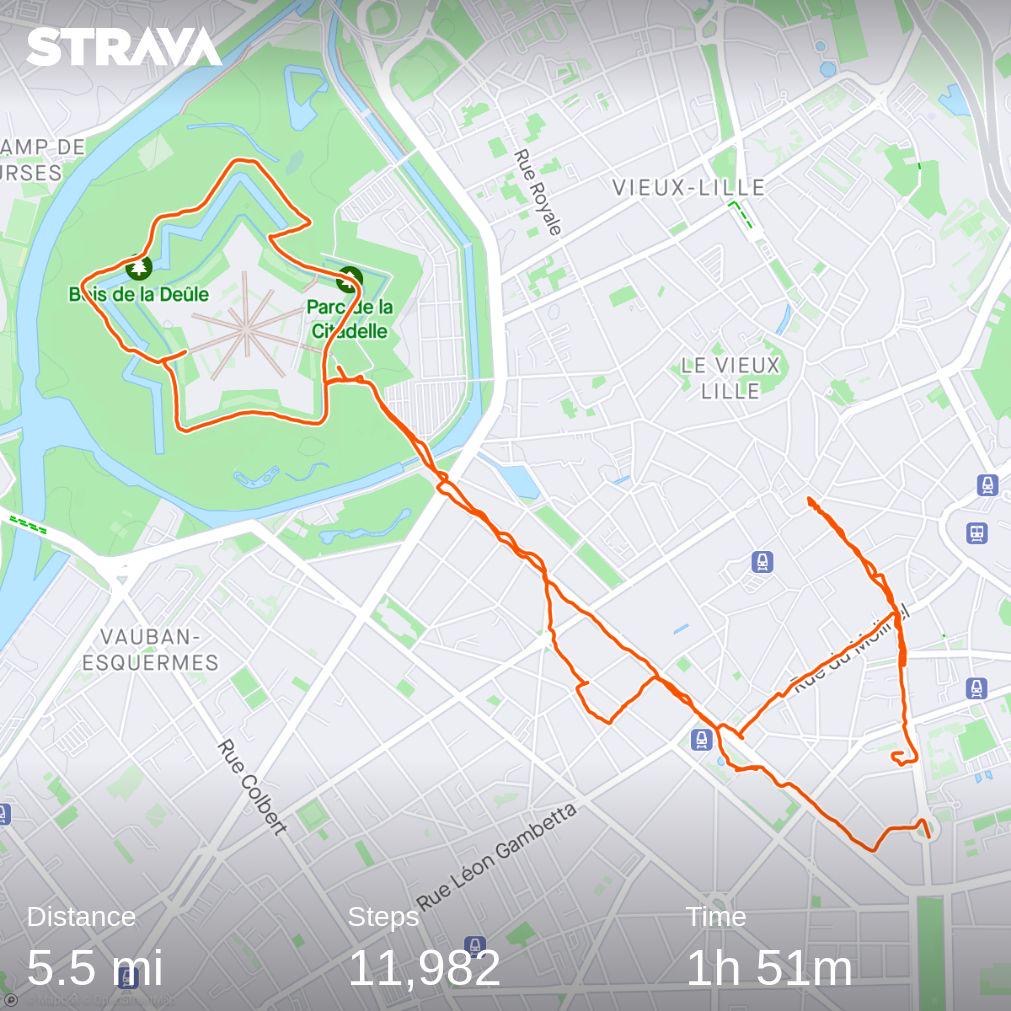
Porte de Paris
Setting out from our hotel, the first stop on our walk was the Porte de Paris, an arch monument built in the 17th century to commemorate Louis XIV’s (Sun King) capture of the city. While most of the old city walls are gone, this monument has been preserved and the detail of it is really impressive.

The sculptures along the top need a deep cleaning. Dirtiness aside, on the right, is Hercules, the symbol of strength. On the left is Mars, the god of war. The top of the arch is crowned by two angels trumpeting the Sun King’s conquest to the entire world.

Palais des Beaux Arts
As we continued on our way, we passed the Palais des Beaux Arts, the fine arts museum. It’s a stunning building that we also passed at night and wished we had gone inside to tour. Just another reason to return to Lille!



Léon Trulin and the Monument to Those Shot
At the entrance to the Citadelle is a pretty moving monument in memory of members of the Jacquet Committee (Lille’s resistance network) who, during the First World War, were shot for having helped French and English soldiers who took refuge in the city to escape.

Léon Trulin was a Belgian spy arrested and executed, at the age of 18, by the Germans at the Citadelle while it was under their control during WWI. In the picture above, he is depicted as laying face down on the ground. On a wall of the Citadelle is a plaque at the location of his execution, but we couldn’t get to it due to a detour along our walk.
Around the corner from the Lille Opera House is a statue for Léon Trulin as well.

The Citadelle
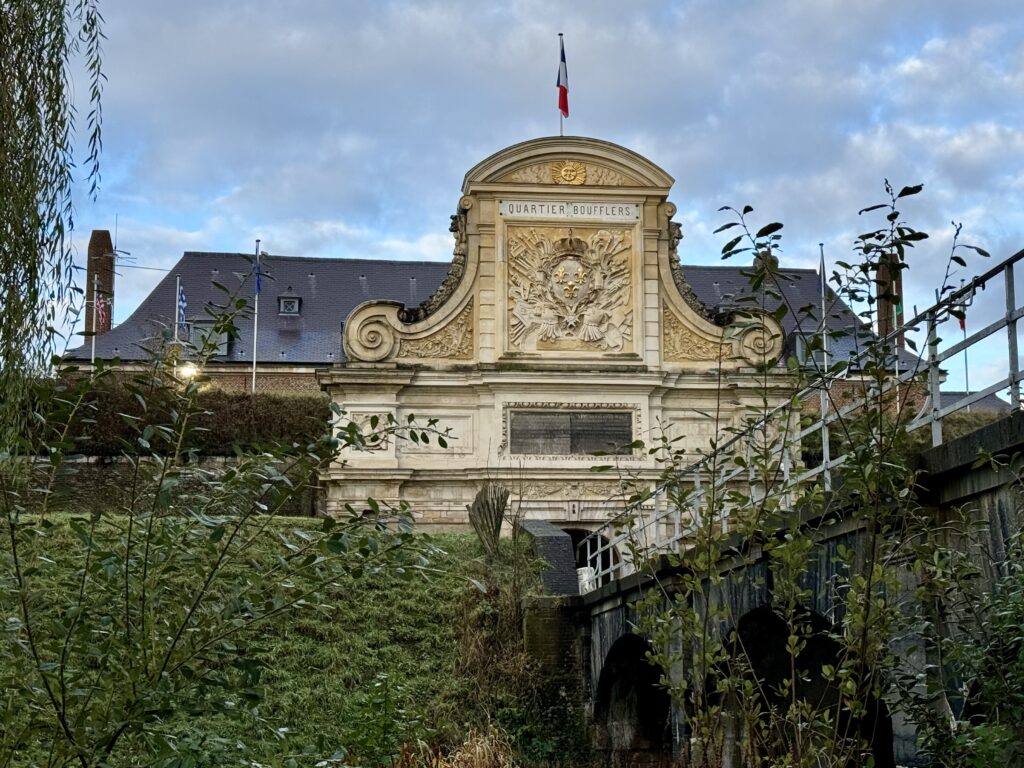
The heart of the Citadelle is closed to the public because it retains its military use: home to the Rapid Reaction Corps-France (CRR-Fr). The only one of its kind, the CRR-Fr is the highest-level deployable operational unit available to the French army.
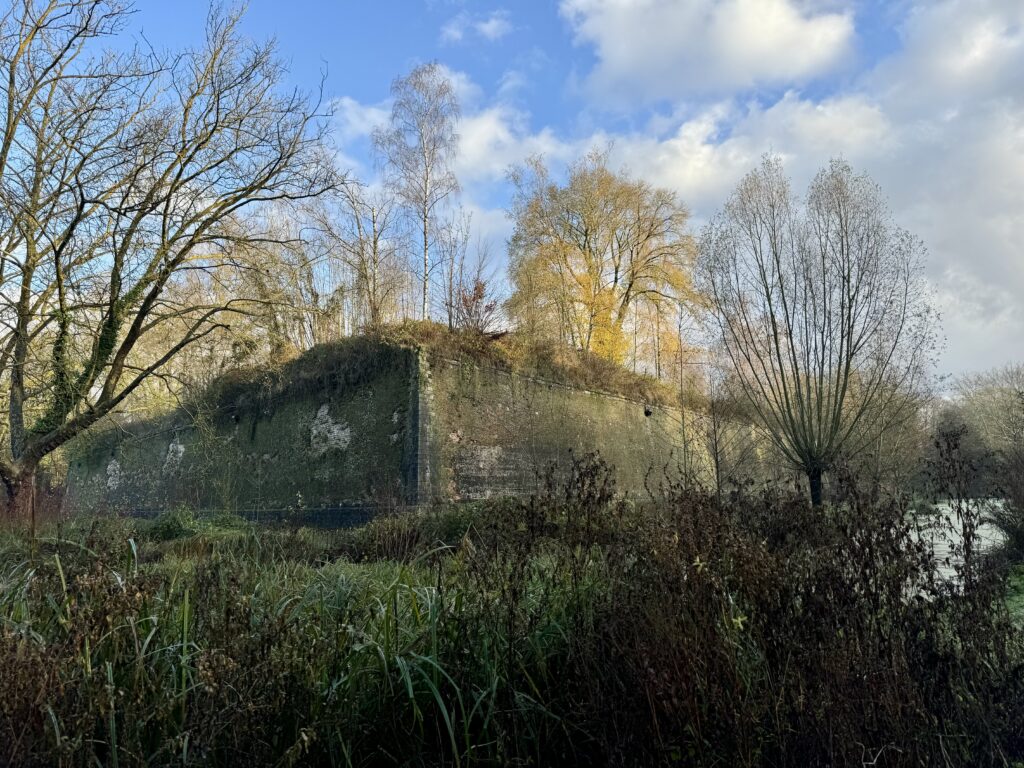
The Dauphine Gate, pictured below, is nestled along the fortress wall. According to history, it was the gate most exposed to attack.
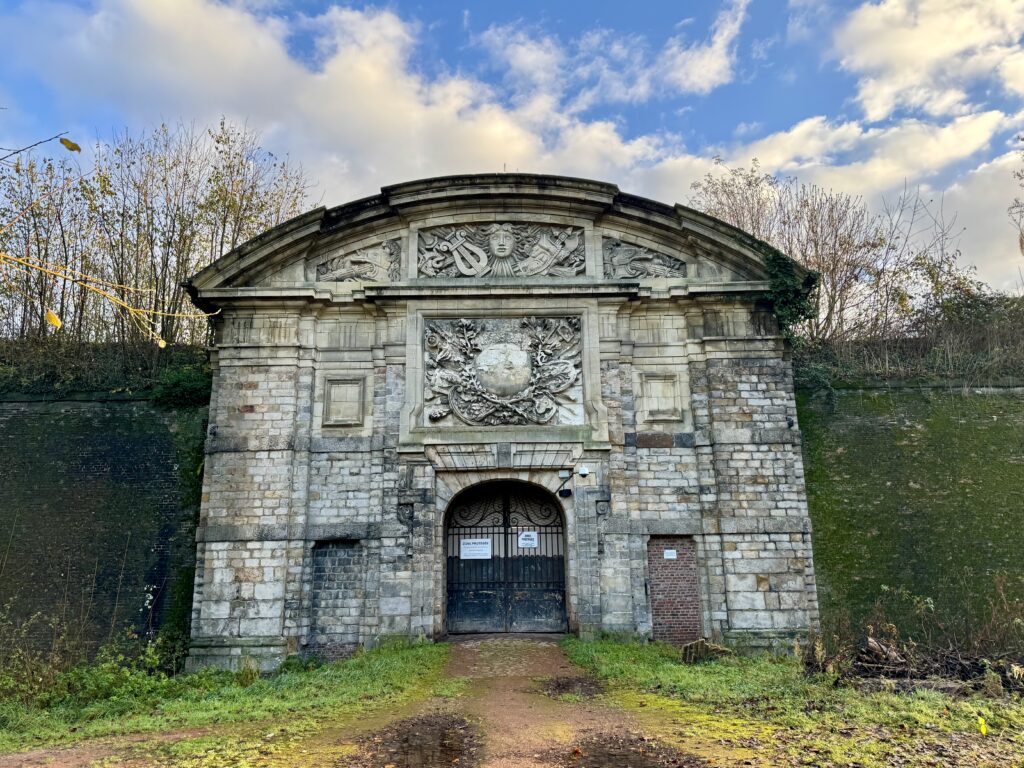
Lille Cathedral
It seems every city in Europe has its own Notre Dame Cathedral, Lille included. Lille Cathedral, the Basilica of Notre Dame de la Treille is unique for having been built in stages under the direction of several generations of architects from 1856 to 1975.

The Cathedral was completed in 1999 by the installation of a modern facade as you can see above. Walking along the perimeter you can really see the older construction and incredible detail.


On a street behind the Cathedral is this cute little yellow house. It is said to be the smallest house in Lille!

Lille Synagogue
The oldest synagogue in the northern part of France, Lille Synagogue is one of few synagogues to have survived intact from the Nazi occupation of France, as the Nazis used it to store weapons. In January 2022, it reopened after three years of restorations. In November 2018, to raise funds for the renovation and to educate the local community, it ran a mojito bar (!!) with guided tours. The sun hitting it just right made it look so beautiful.
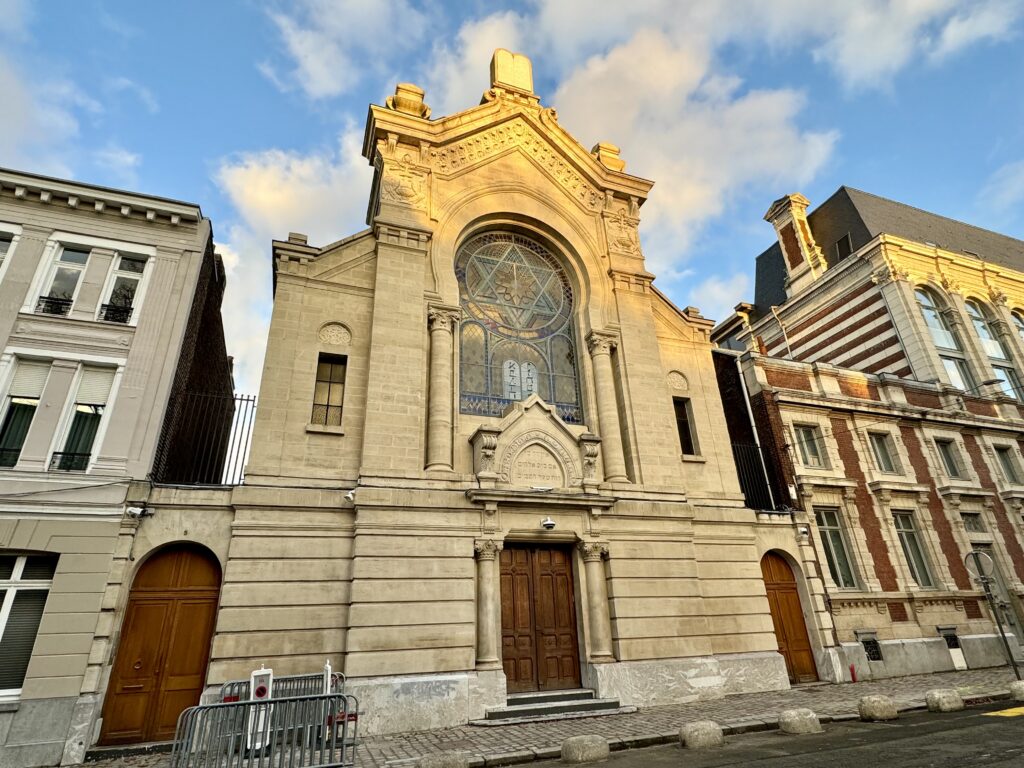
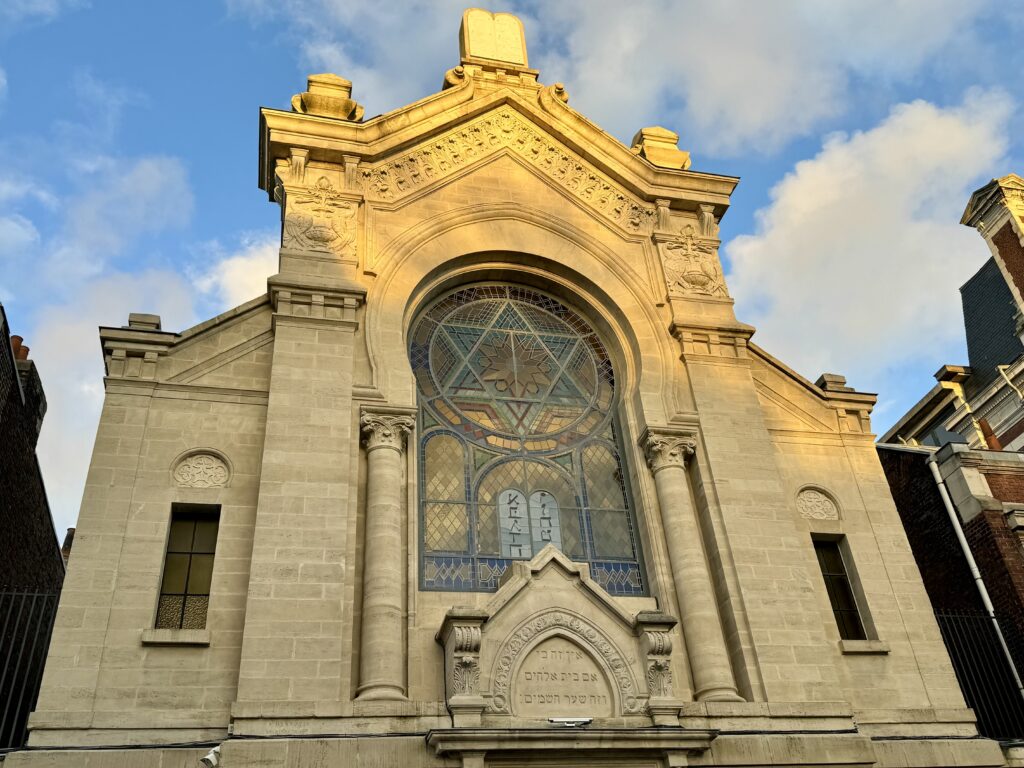
Stolperstein (Stumble Stones)
While exploring the city, we searched out a couple Stolperstein, brass plates inscribed with the name and life dates of victims of Nazi extermination or persecution. Literally, it means ‘stumbling stone’ and we’ve seen numerous of them during our travels through Europe.
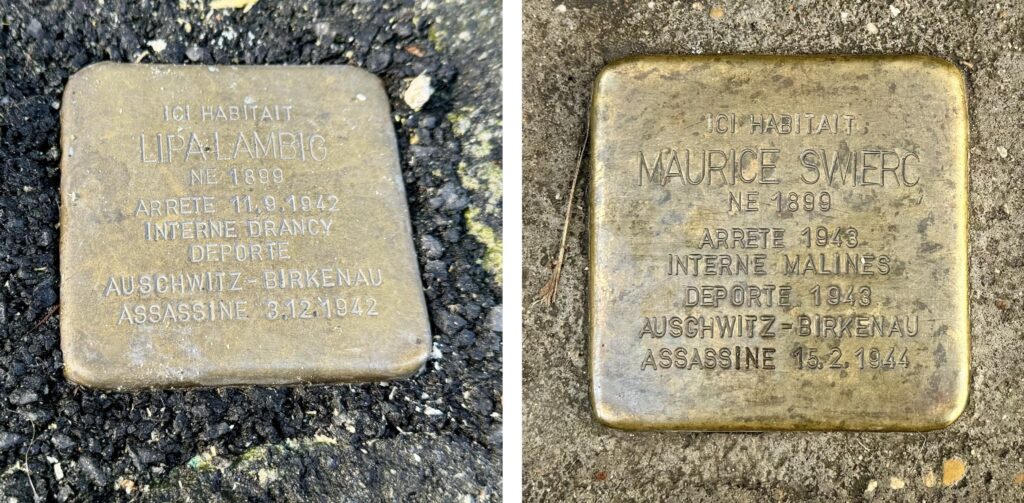
They’re generally placed at the last place of residency, or sometimes work location, of the person before they fell victim to Nazi terror. It’s always moving to think about the lives those people lived before the Holocaust.
L’hermitage Gantois Hotel
Lastly, in terms of Lille’s rich history that we saw, is the hotel we stayed at. L’hermitage Gantois Hotel is a Marriott property with a fascinating history.

Founded in 1462 as a hospice, it was built to treat the sick and the elderly and remained a hospital for over five hundred years up until 1995. It’s made up of several adjoining blocks of houses together, as you can see above.
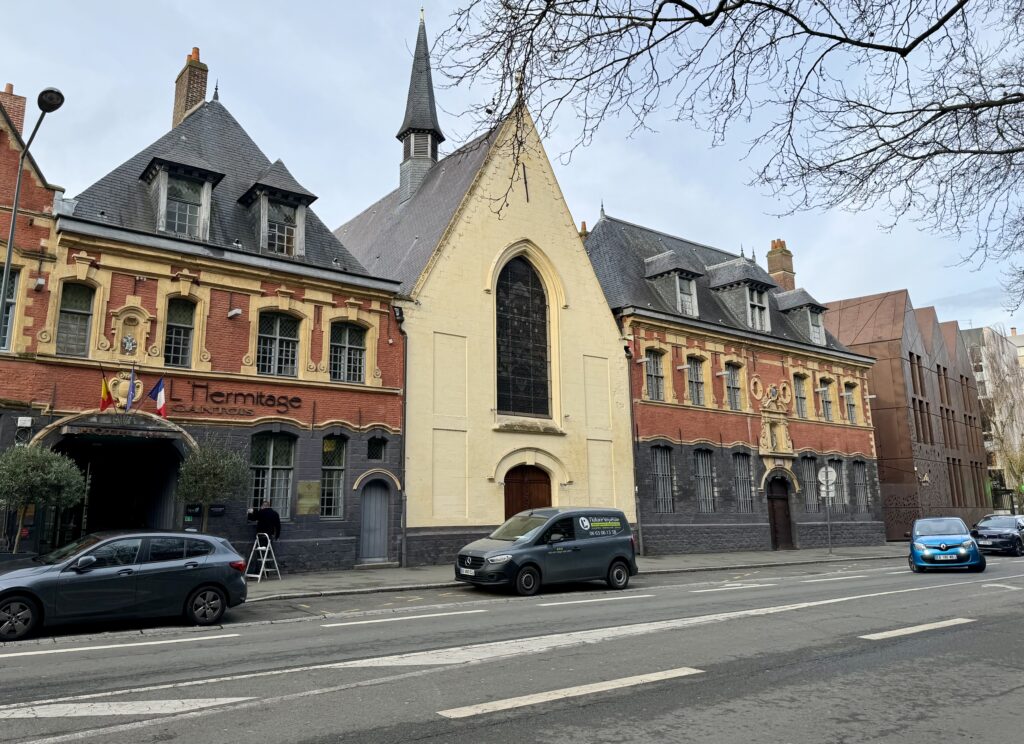
In the middle you can see an arched stained glass window. That used to be the main hall for the patients of the hospice. It’s stunning on the inside. At the far right, is the new facade, home to the hotel’s spa.


The hotel still has its original chapel and a wall outside of our room is original as well. You can see the 1637 date in the bricks.
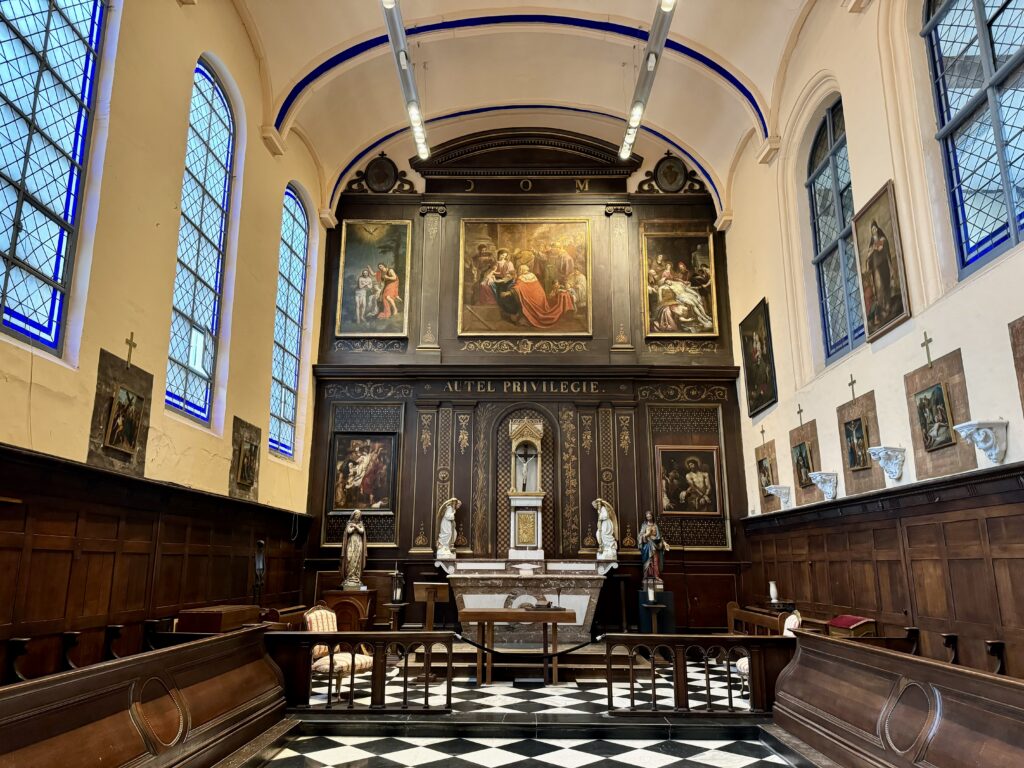

We were upgraded to a suite, and were told nuns once lived in these rooms. Layed out as if it were three separate rooms at one time, we had a comfortable king size bed, a nice sitting area and very spacious bathroom with tub and shower. The room also had a lovely view out to a courtyard. Take a look at our room in this video:
